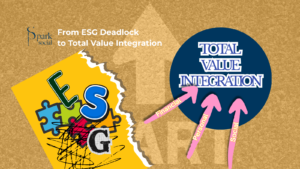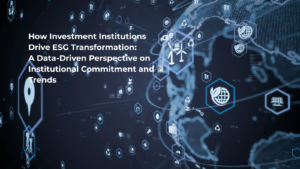
Beyond Compliance: Embedding SDGs into Long-Term Business Strategy
The United Nations Sustainable Development Goals (SDGs) provide a transformative framework for tackling global challenges like climate change, inequality, and poverty. For businesses, the SDGs are more than regulatory milestones—they represent an opportunity to innovate, build resilience, and create enduring value for both stakeholders and society.
Why the SDGs Matter Beyond Compliance
Compliance ensures businesses meet regulatory demands, but aligning with the SDGs offers a forward-thinking approach that goes beyond ticking boxes. The SDGs enable organizations to integrate purpose-driven strategies into their operations, contributing to global progress while fostering trust, innovation, and sustainability. They serve as a compass to help businesses thrive in a rapidly changing world, ensuring alignment with the values of modern consumers and investors who prioritize sustainability.
Integrating the SDGs into Your Strategy
To successfully adopt the SDGs as part of a long-term business strategy, a structured, intentional approach is key. Here’s how organizations can make the SDGs a central part of their roadmap:
- Prioritize Relevant Goals: Identify the SDGs most aligned with your business’s purpose and industry. Focus on areas where your organization can have the greatest impact—whether it’s clean energy (SDG 7), gender equality (SDG 5), or sustainable cities (SDG 11).
- Set Clear and Measurable Objectives: Establish specific, actionable targets that connect your corporate goals to SDG priorities. Incorporate these objectives into operational plans to ensure alignment across the organization.
- Sustainability in Decision-Making: Embed SDG-focused criteria into governance and operational processes. Evaluate business decisions through the lens of their environmental, social, and economic impacts.
- Collaborate for Greater Impact: Forge partnerships with NGOs, government entities, and other businesses to drive collective progress toward the SDGs. Collaboration fosters innovation and helps tackle systemic challenges more effectively.
- Measure and Communicate Success: Track your progress using clear metrics and reporting frameworks. Share your achievements through sustainability or integrated annual reports, emphasizing transparency and accountability.
The Benefits of SDG Integration
Organizations that fully integrate the SDGs into their long-term strategy are not only making a difference but are also reaping significant advantages, such as:
- Enhanced Innovation: Driving new product development and services that meet evolving sustainability demands.
- Stronger Stakeholder Trust: Building credibility with consumers, investors, and communities through a commitment to sustainable growth.
- Risk Mitigation: Addressing social, environmental, and governance risks proactively to ensure long-term resilience.
- Talent Attraction and Retention: Employees today seek purpose-driven workplaces. Aligning with the SDGs helps attract and retain top talent.
Moving Toward a Purpose-Driven Future
The SDGs are a blueprint for sustainable progress—not just globally, but within individual businesses. By embedding the SDGs into long-term strategies, organizations can move beyond compliance, unlocking value for themselves and driving collective impact on the world’s most pressing challenges.
Now is the time to act. Through strategic alignment with the SDGs, businesses can create a future that is not only sustainable but also inclusive, innovative, and resilient. Together, we can turn purpose into progress.
You may also like




